Buddhist Temple Remains at Damagou (Khotan, Xinjiang)
Amongst sand dunes and tamarisk groves, Tuopulukedun Buddhist temple remains are located about seven kilometers southeast of the town seat of Damagou town, Cele County, Khotan District. Wu Xinhua and Zhao Huimin, two researchers from the Institute of Archaeology, CASS, together with scholars from Khotan District Institute of Cultural Relics and Khotan District Normal College, excavated this temple site from September 20 to October 28, 2002.
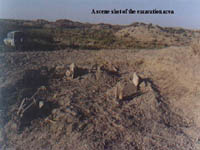
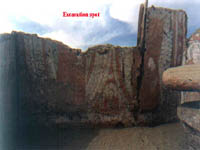
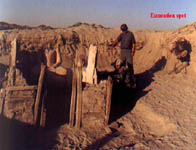
Excavation:
Four grids, each measuring 5m by 5m, were excavated. All the grids are located on the top of an independent sand dune that measures 40 meters long from east to west, and 20 meters from south to north. The highest point of the sand dune is in its east half, with a height of about 5 to 6 meters. Desert plants such as reed and tamarisk grow on top of this sand dune.
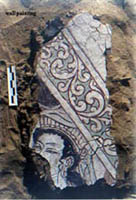
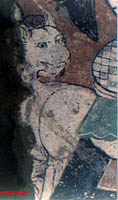
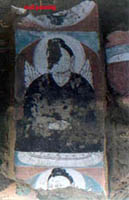

Remains and Excavated Objects:
The Buddhist temple site itself faces south, measuring 2 meters from north to south, 1.7 meters from east to west. Remaining height of the temple walls is 1.45 meters. The walls are made of wooden frames and outer layer of earth. About 120 fragmentary pieces of wall painting and three wooden devices are found.
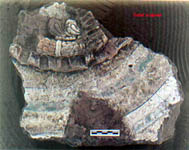
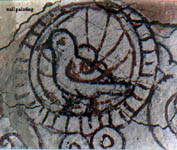
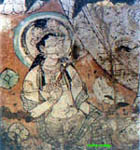
Date:
There is no textual record regarding the date of this temple. Neither can the excavated objects provide any clue to the date of the temple. Based on the stylistic features of the painted sculpture and the temple’s mural technique, we tentatively date the temple to the 7th century AD.
Historical Background and Significance of the Discovery
Khotan is not only the center of Central Asian Mahayana Buddhism, it is also the origination place of Mahayana Buddhism of the Central Plains. Khotanese Buddhist art in general and the ‘Khotan School of Painting’ in particular had great impact on Buddhist art in China. Khotanese painting very probably also played an important role in the emergence of Buddhist art in Tibet.
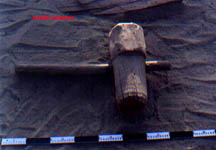
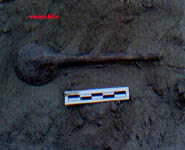
The place Damagou once belonged to a minor oasis state Bimo during the Han dynasty. It was later annihilated and engrossed by Khotan. Since the early 20th century, it has been an area within Khotan district that witnesses the most extensive presence of ancient Buddhist temple remains. Many Buddhist sites dated to the Wei and Jin periods have been discovered in the area. As well, some important cultural relics have been unearthed from the area, continuously modifying our understanding of the history of Khotan and even the entire southern region of Central Asia.
Tuopulukedun Buddhist Temple is the smallest temple ever found in the West Regions (xiyu), probably even in entire country. It is also the first Buddhist temple site that has ever been found in south Damagou.
The structure of the temple, its mural, and cultural objects will greatly contribute to our understanding of Buddhist beliefs, folk Buddhist religions, and mural technique in the region of Khotan. Moreover, it will also shed new light on the dissemination of Buddhism in the Hexi Corridor, the Central Plains, and Tibet.

